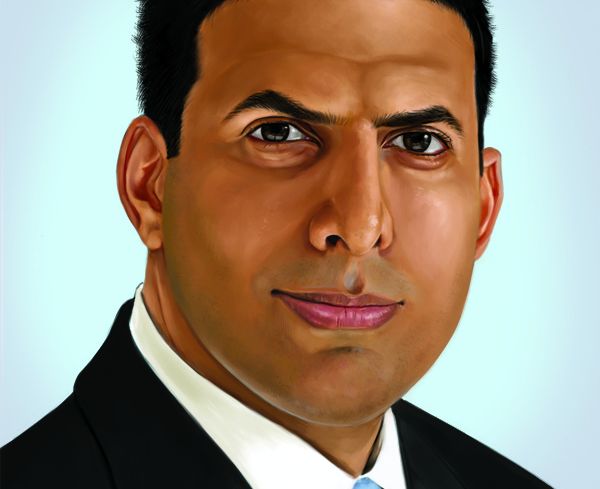Commercial Property Markets in a World of Rising Rates
By Sam Chandan October 31, 2013 2:30 pm
reprints
More than three months after the summer’s initial spike in Treasury yields, commercial real estate investors are breathing a little easier. Third-quarter 2013 data show a modest impact on cap rates and borrowing costs from higher interest rates; neither increased in lock step with their baseline costs of capital. In actively contested segments of the market, including most institutional markets, cap rates were flat or increased only slightly during the quarter. In the extreme, cap rates for the most coveted assets inched lower.
In contrast with the sensitivity of single-family housing prices and sales volumes in higher residential mortgage rates, commercial property spreads have absorbed the brunt of the higher floor on yields. Aggregate measures of property and unimproved land value have ceded little of their recoveries. Instead, sluggardly income gains for commercial properties, more robust gains for apartments, and relatively wide spreads across all asset classes have blunted the impact of the yield adjustment on valuations.
Appreciation showed inevitable signs of slowing during the third quarter but did not turn negative except in areas where disappointing fundamentals persist as entrenched headwinds. Smaller and value-add assets, where income is capitalized at a lower rate, were more susceptible. Weakly contested markets, characterized by a relative paucity of investors and lenders, also saw cap rates inch higher. These included a number of secondary markets that rank atop the national economic and job growth statistics. The need for liquidity remains a higher priority than fundamentals among risk-averse investors; however robust their underlying growth drivers, these markets lacked the requisite mass of engaged participants.
Will it remain easy for investors in the larger, more liquid markets? Along with their lenders, they should be wary of drawing definitive conclusions about the manner of things from this most recent experience with rising rates. Assuming a static relationship between baseline yields and property prices invites complacency in the assessment of forward capital market risks. The anecdotal and underwriting indicators from the third quarter are pointing in the wrong direction on this front. Bumptious from property values’ initial resilience, the market is discounting the potential for drags from further shifts in monetary policy and Treasury markets. In many cases, loan pricing and sizing during the quarter reflect an underwriting assumption that rate adjustments are largely complete.
Whether rates rise further is irrelevant if the surface evidence from the last quarter tells the whole story. It does not. All things being equal, an information-efficient market will see an increase in cap rates and borrowing costs from higher risk-free rates. Commercial property will have to compete more aggressively, in the form of higher income and appreciation returns, as opportunity costs edge higher. In the most mundane model of cap rates, the discount rate must decline or the income growth expectation must increase.
To the benefit of the market, all things have not remained equal. Nor does an assumption about market efficiency hold much water in commercial real estate. The popular logic relies upon the premise that rising Treasury yields are causally related to a better economic outlook or expected inflationary pressure. The rosier projection allows spreads to narrow, offsetting in whole or in part the rising underlying rate. The rudimentary theoretical model bears out. During three prior periods of sharp or protracted increases in Treasuries—the mid-1990s, the dot-com boom of the late 1990s, and the years of the housing boom—transaction cap rates have evinced an ambiguous relationship with the risk-free yields.
The market’s past performance is not necessarily an indicator of what happens next. The market’s crucial error is the working assumption that whatever is pushing on Treasuries is good for real estate. But if the last quarter is strong evidence that real estate values can withstand higher rates, it is also strong evidence that rates can increase with no material change in the outlook for the economic or property fundamentals. When the observable risk-free yield reflects deliberate distortions from interventionist monetary policy, assumptions about how a market functions in the absence of distortions are qualified.
It comes down to where rates are headed and whether it’s for reasons that will also lift income. Going into the September meeting of the Federal Open Market Committee, investors anticipated a shift to tighter monetary policy. Expectations regarding the short-term Fed funds target rate have been anchored to an unusually explicit timetable. Long-term rates, however, have depended upon the Fed’s multibillion-dollar program of monthly bond purchases. Informed by the most current data, the committee was split between tapering and steady asset purchasing.
Comments from various regional Fed presidents following their September meeting suggest their tapering call could have gone either way. Uncertain of the damage from a reckless Congress, the Fed is likely to delay tapering at its October meeting. December is less certain. The important element of the story is the expectations of a market that can dwarf the Fed in the volume of its asset purchases and dispositions. We may want to believe that the Fed will smooth the adjustment to higher rates and that rates and income will move in synchronicity. If the Fed had such control over the long-end of the curve, rates would not have risen so abruptly heading into the third quarter.
Sam Chandan, Ph.D., is president and chief economist of Chandan Economics and an adjunct professor at the Wharton School. The views expressed here are his own. He can be reached at dsc@chandan.com.


